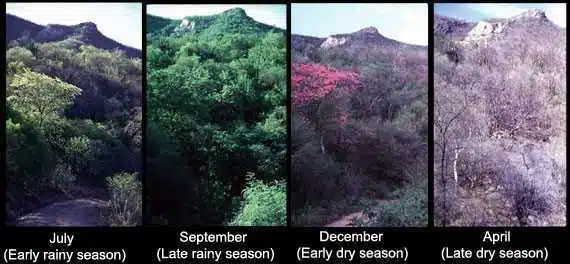Mexico
Tropical Forest Project
PROJECT HOME
In our Mexico program, we are focused on the reptiles, amphibians, and other wildlife of a rare and wild Mexican ecosystem, that of the Alamos region in Sonora, Mexico.
We are working with communities of reptiles and amphibians, which include the Mexican beaded lizard, mountain king snake, desert tortoise, spotted box turtle, Madrean black-tailed rattlesnake, barking frog, and Mexican leaf frog, among many others.

About the Alamos Region
Our primary study site for the project is about eight hours south of Tucson, AZ, USA, and three hours by truck on rough roads into the mountains from the town of Alamos, Mexico.
Seasonality of the region is extreme. Most of the year is dry, and the vegetation resembles a mix of thorn scrub and desert. Most trees are leafless and smaller herbaceous vegetation is dead. However, for 3-4 months a year, the climate turns into that of a rainforest. This is also when the bulk of the animal activity can be found.
This habitat, called tropical deciduous forest, represents a very rare habitat type. It contains flora and fauna in common with rainforest, desert, and temperate woodland. For instance, the black-throated magpie jay (Calocitta colliei) and military macaws (Ara militaris) are two avian representatives from tropical regions, and jaguars are sometimes seen close by. Our study area is the southernmost extent of the range of the desert-dwelling Gila monster (Heloderma suspectum), and the northernmost extent of the Mexican beaded lizard (Heloderma horridus); both can be found at our sites. Desert tortoises are also not uncommon.
Mexico Biodiversity Project
Project Home
Conservation Issues
Methods

Spanning several distinct biogeographic zones, the Sierra de los Alamos region of Mexico holds some of the greatest and most distinct biodiversity in all of North America.